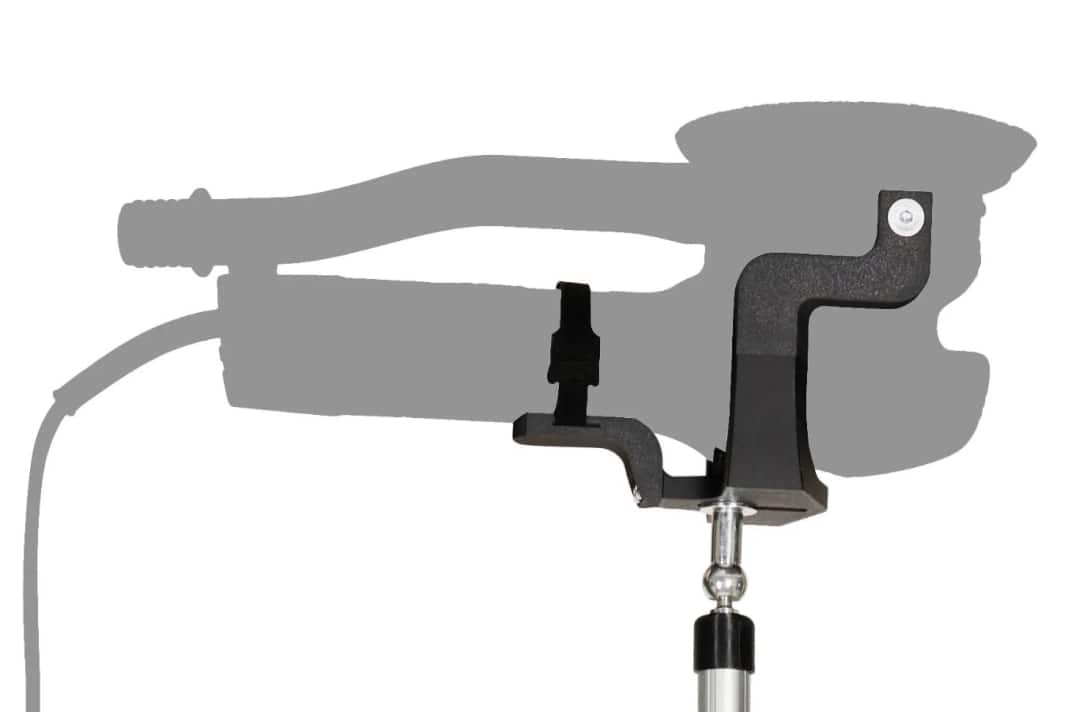


Working on the underwater hull is one of the most strenuous tasks for boat owners. In particular, overhead sanding with heavy tools quickly leads to fatigue and decreasing precision. The German company Sailmotive has now developed a solution that should make this work considerably easier. The centrepiece of the system is a telescopic rod with an integrated gas pressure spring that supports the random orbital sander and relieves the user of a large part of the weight. According to the manufacturer, the contact pressure is 25 or 50 newtons - force that the user no longer has to apply themselves and can instead concentrate on precisely guiding the tool. There is a choice of two gas springs: One with 25 and the other with 50 newtons of contact pressure.
Simple and effective
The sanding support consists of an aluminium telescopic rod with a special holder for random orbital sanders. The connection is made via a ball joint, which enables flexible movement of the sander. In the minimum position, the telescopic rod measures 1.36 metres in height; fully extended, it reaches a height of 2.19 metres. This results in a working range of 85 centimetres, which covers most applications on the underwater hull. According to the manufacturer, the company is already working on a longer module that will enable working heights of up to 3.30 metres. The gas pressure spring has a stroke of 30 centimetres and ensures even contact pressure while the tool is guided over the support.
However, the currently available height of just under 1.40 to well over 2.19 metres covers the area in front of the chest up to above the head. This is where the sander is usually held during sanding work on the underwater hull. On boats with a very deep keel, a work platform must be set up anyway, so a significantly longer support alone would not be an advantage.
From the printer to the eccentric
When developing the sanding support, Sailmotive placed particular emphasis on the choice of materials. The brackets for the sanding equipment are made from ASA plastic using 3D printing. This material is similar to the familiar ABS, but offers better UV resistance and processability. The telescopic rod itself is made of aluminium, which offers a good ratio of stability to weight. With the "Made in Germany" quality promise, the company emphasises its claim to precision and durability.
Not only the sanding support itself, but also the choice of the right sanding device is crucial for an optimum result. The sanding support from Sailmotive is currently compatible with four different sanding devices. There is a specially customised holder for each device, which is manufactured using 3D printing. Currently available are holders for the Bosch GET 75-150, Bosch GEX 40-150, Metabo SXE 425 and Makita BO6050J. The company is already working on further holders for Festool and Makita tools to extend compatibility. The geared random orbital sanders such as the BOSCH GET or Makita BO6050J offer higher removal rates, but are somewhat more demanding in terms of handling. The work is faster, but also more physically demanding. Nevertheless, Sailmotive emphasises that the effort required is only a fraction of that required when working without sanding support.
Adjustment options for optimum customisation
Another well thought-out detail of the sanding support is the ability to adjust the attachment point on the head adapter. This function allows the position of the sanding device to be optimised for the respective work situation. This allows the user to work precisely even in areas of the underwater hull that are difficult to access and to optimise the ergonomics individually. The combination of a flexible ball joint and adjustable attachment point ensures maximum freedom of movement and a stable hold for the sander. This well thought-out design not only reduces physical strain, but also improves the quality of the sanding result.
Technical specifications:
Dimensions:
- Minimum height: 1.36 metres
- Maximum height: 2.19 metres
- Working range: 85 centimetres
- Stroke of the gas pressure spring: 30 centimetres
Performance:
- Contact pressure: 25 & 50 Newton
- Planned extension: working heights of up to 3.3 metres
Compatible sanders:
- BOSCH GEX 40-150, BOSCH GET 75-150
- Metabo SXE 425
- Makita BO6050J
- In development: brackets for Festool and other Makita models
Material:
- Telescopic pole: Aluminium
- Brackets: ASA plastic (3D printing)
- Connection: ball joint with adjustable connection point
Price:
- Complete system: 300 Euro

